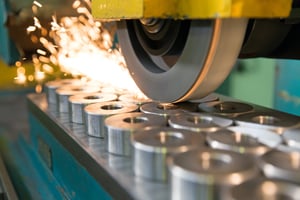
For some purchases, the quantity you need is easy to determine. Car tires or shoes? Piece of cake. But other consumer decisions require a little more thought when you're figuring out how much to buy.
If you're outfitting your manufacturing facility with a synchronized clock system, determining just how many units you need isn't a straightforward proposition. The answer depends not only on the size of your space but its layout and purpose.
Here are some ways to gauge how many clocks you need in your facility, where to place them, and which types of devices are the best fit.
Assess Your Spaces
The question of how many clocks you need is really a question of where you need them.
Look around your building. Where are people congregating? You're buying a synchronized clock system to make sure your personnel are in sync, so it's important to determine where they tend to gather.
For instance, you'll probably want a clock in the break room or lunch room so employees can be sure they're getting back to work on time. Same thing goes for the kiosk where they punch in for work.
If employees are required to change clothes before and after a shift, a clock in the changing area or locker room is a good idea, too.
Don't just think about where employees assemble, but how they get around the facility. Employee entrances and exits are good places for clocks, as are high-traffic corridors.
Look Around the Manufacturing Floor
Your decision could get more complicated when determining which locations on the manufacturing floor require a clock. The answer to that question depends on how many workstations you have and how they are arranged.
Put yourself in the shoes of an assembler or machine operator. The reason you're hanging clocks in the first place is so that they can easily glance up to tell the time, so think about the line of sight from each workstation and place your clocks accordingly.
Pick Analog or Digital
Once you've got a good idea of where you need clocks, it's time to think about which type you need.
In a perfect world, digital clocks would be the clear-cut choice, given how easy they are to read. But it might not be practical to outfit your facility exclusively with digital.
For one, digital clocks are more expensive than analog, so if you need large quantities for a large facility, you may favor the more cost-effective option. In fact, most manufacturing facilities choose mostly analog clocks.
Aside from being less expensive, analog clocks provide flexibility. Some analog models are battery powered, giving you almost endless placement options, with no wires to connect or power sources to locate.
A mixture of analog and digital could also be appropriate. For instance, it may make sense to place large digital clocks in your most wide open spaces where workers must check the time from across the room. But an analog clock would work better in the break room.
A Clock That Tells More Than the Time
If you want your clocks to do more than tell the time, one option is a system called EverAlert®. EverAlert is an emergency communication platform that consists of a system of displays placed throughout a facility that not only tell the time, but also keep building occupants notified of severe weather, fire, and other emergencies. This is particularly vital if you have employees working a night shift as the dark sky may conceal the weather outside.This is also a smart option if your facility lacks windows.
EverAlert isn't just for emergencies, however. It can also be programmed to display everyday information such as calendars and announcements, like “X days without an emergency.” Learn more about how EverAlert can improve your facility!

